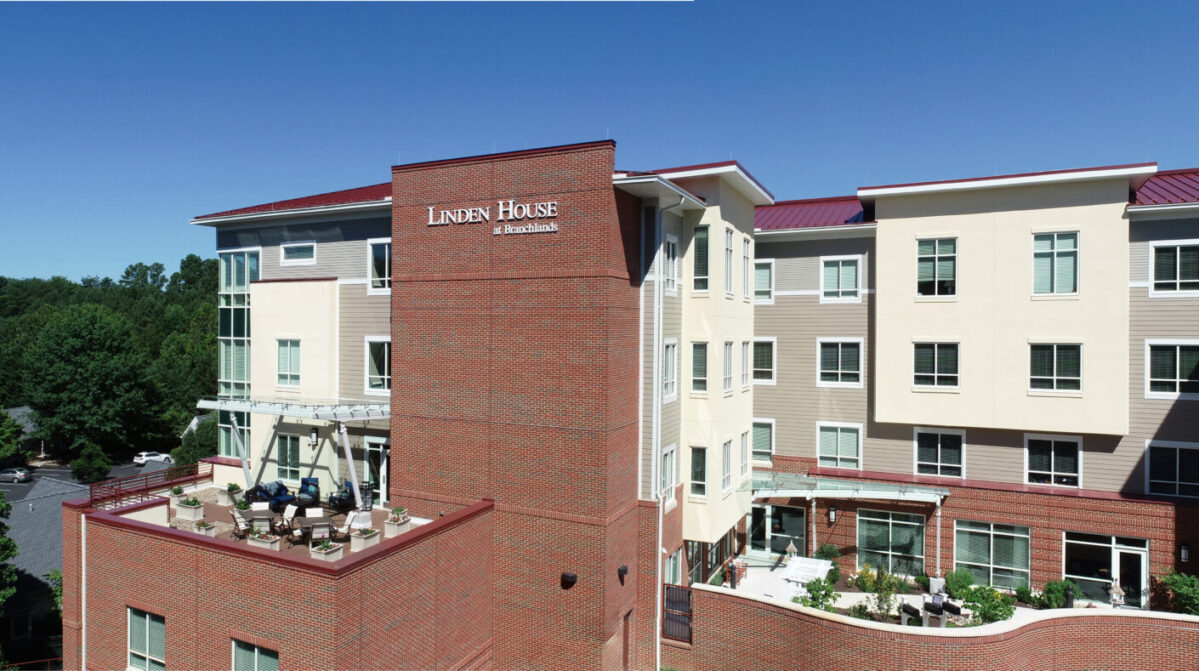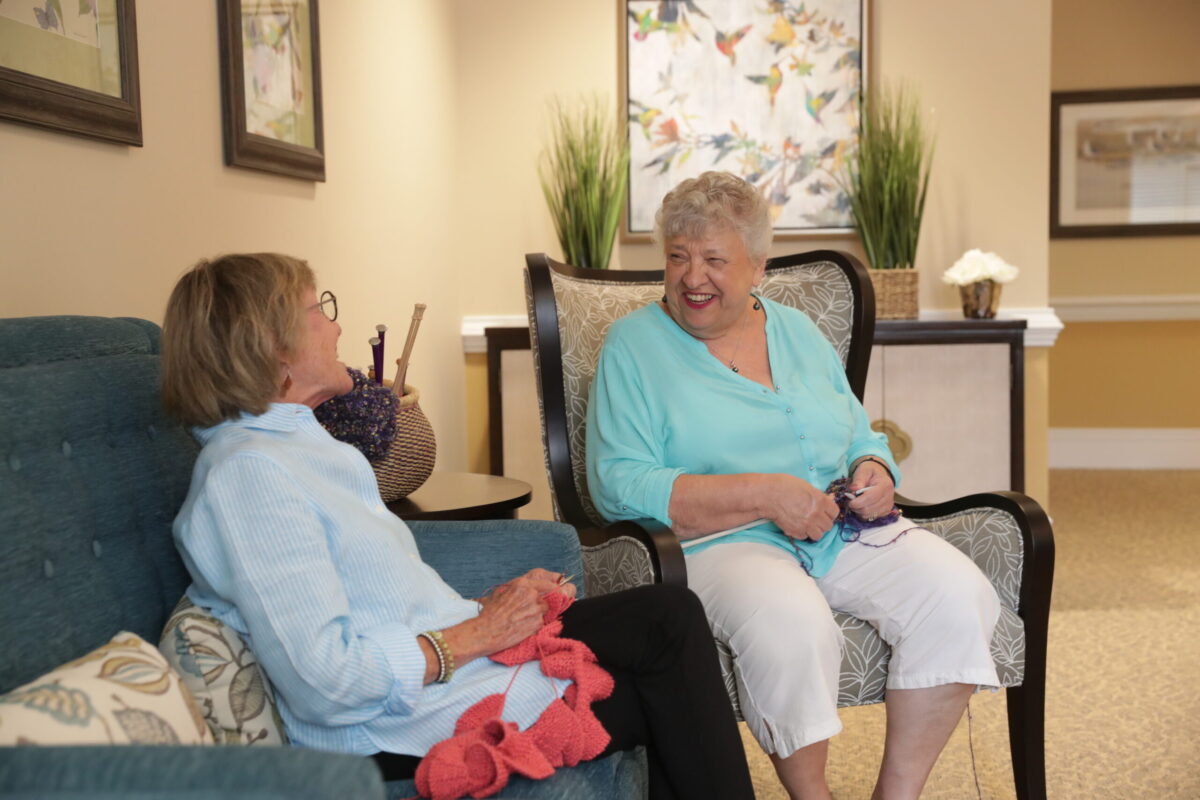When thinking about your retirement and what that looks like, there’s the question of what type of senior living community will be right for you. Or maybe you’re helping your parents as they start downsizing and are looking to move into a smaller place. Once you begin planning, you will notice new terms you may not have previously encountered. You might have questions like: What is the difference between assisted living and a nursing home? What is a “continuing care retirement community?” What fees and other factors should I be asking about?
Here is an abbreviated list of terms based on several categories that you will find useful as you begin your next journey in life or assist your loved ones in theirs.
Senior Living and Residence Terms

55+ Active Adult Communities
These are communities that cater to adults aged 55 and over, offering independent living homes. They usually feature a maintenance-free lifestyle and a campus with common spaces, social opportunities, and amenities. Unlike a CCRC or Life Plan Community, no care options are available in these communities. The Manor House Senior Living at Branchlands is an example of this type of residence.
Adult Day Care
A service that provides care for adults outside the home. Adult day care is usually offered during the day, Monday through Friday, and can include a wide range of activities and services, including meals, social activities, and medication management.
Assisted Living or Assisted Care
A type of care level offered at a senior living community where residents receive assistance with activities of daily living based on their unique needs. Services can include meals, transportation, housekeeping, medication management, laundry, and social activities. Linden House Assisted Living at Branchlands is an example of this type of residence.
Continuing Care Retirement Community (CCRC)
A senior living community that provides progressive levels of care (also referred to as a continuum of care) to residents based on their individual needs. Sometimes referred to as a life plan community. The care levels within a CCRC are often referred to as independent living, assisted living, memory care, and skilled nursing and rehabilitation. Most CCRCs require a substantial entrance fee, which may or may not be refundable, and a monthly fee, which varies depending on the type of CCRC contract. Because of the potential financial commitment and long-term contract, it is important to research these types of communities and evaluate what it will mean for you. You also may want to have your attorney review the contract. This article gives a more in-depth look into CCRC contract types.
Continuum of Care
The range of care services and housing options available within a particular senior living community. The services offered often evolve to meet an individual’s needs over time. Branchlands offers a continuum of care from independent living to assisted living to memory care.
Independent Living
A senior living community in which residents require minimal or no assistance with daily activities. It offers residents the opportunity to live in a low-maintenance environment with other seniors. The Manor House Independent Living at Branchlands is an example of this type of residence.
Maintenance-Free Living
Maintenance-free living means that a person doesn’t have to devote time or mental energy to the daily tasks of home and lifestyle maintenance, such as landscaping, home repairs, and housekeeping. Different communities offer different amenities and services – be sure to ask what is included and what requires an extra monthly fee.
Respite Care
Short-term institutional care given to an aging, sick, or disabled person. Respite care also provides relief and support to the main caregiver should they need to be away for a short time.
Senior Living Community
A residential setting, like Branchlands, specifically designed for seniors, with an emphasis on maintaining a high quality of life through activities, services, and community engagement.
Memory Care
Residents of Memory Care receive specialized services and need additional support due to memory loss, dementia, or Alzheimer’s disease. The Gardens Memory Care at Linden House Assisted Living is an example of this type of residence.
Nursing Home
A public or private residential facility that provides personal or medical care for older people and others needing 24-hour care who may have an illness or disability and are unable to care for themselves. Most nursing homes have nursing aides and skilled nurses.
Skilled Nursing Facility
These facilities offer round-the-clock nursing care. They are primarily providing post-acute rehabilitative care designed to help someone recover from a health event and return to their home. However, Skilled Nursing Facilities can also provide long-term care for those with conditions necessitating 24/7 nursing care.
Senior Health, Wellness, and Lifestyle Terms

Activities of Daily Living (ADLs)
ADLs include daily self-care activities, such as dressing, bathing, personal hygiene, eating, and taking medication.
Aging in Place
The concept of remaining in one’s home regardless of changes in health or levels of care that are needed. This can take place in a house, apartment, or senior living community.
Alzheimer’s Disease
A medical condition that affects the brain and is a form of dementia. Symptoms include loss of memory, inability to recognize people, and other issues.
Ambulatory
The ability to walk independently, including walking with the use of an assistive device like a cane or walker.
Dementia
The loss or diminishment of cognitive functions, such as memory, reasoning, and thinking, that interferes with a person’s daily functioning. There are numerous types of dementia, including Alzheimer’s disease, Parkinson’s disease, and others.
Home Health Aide
A certified health care worker who offers support at home and can help you age in place. They can fill a variety of functions and roles, including support with activities of daily living.
In-Home Care
A home health aide or other professional provides support with ADLs and other activities with the goal of individuals remaining in their home. For example, a home health aide might support you with meal preparation, while a dog walker might tend to your pets.
Medicaid
A federal- and state-funded program that assists individuals with low incomes with coverage for medical care and other health-related services. Medicaid is separate and distinct from Medicare.
Medicare
A federal health insurance program for individuals 65 years of age and older. Medicare also provides health insurance for individuals under the age of 65 who meet eligibility requirements.
Rehabilitation
The process of restoring a capacity lost or diminished by illness or injury. Rehabilitation can include physical, occupational, or speech therapy. These kinds of therapy services are available onsite for Branchlands residents.
Short-Term Rehabilitation
Support aimed at helping someone recover from an injury or surgery, with the goal of returning them to their home. It often includes nursing care and physical, occupational, or speech therapy to improve quality of life and expedite healing.
Costs and Fees Associated with Senior Living Residences

All-Inclusive
In an all-inclusive community, services and amenities — usually meals, lodging, programming, and housekeeping — are included under a single price. Ask for a list of specific services included in the price and what might cost extra even if it says all-inclusive.
Contracts
Senior living communities usually use contracts to outline the duties and privileges of residents as well as the community they live in. This is a legally binding agreement signed “for consideration,” which means each party gets something from the contract. If one party doesn’t follow their contractual duties, the contract may be voided. Because it’s a legal document, it’s important to read it carefully and, if appropriate, to ask a lawyer to review it.
Entrance Fee, Community Fee, or Move-in Fee
Most senior living communities require that you pay a particular amount when entering the community. How much it will be depends on the community. Branchlands has a community fee that covers staff time devoted to assisting the resident move in and transition to life at Branchlands, as well as replacement of worn furnishings and fixtures in the residence and refinishing common areas.
Monthly Fees
Similar to rent, monthly fees cover the costs of senior living and may be lower when you pay a larger entrance fee such as in a CCRC. In addition, you might be able to get some services ala carte for an extra fee, such as housekeeping or laundry services. Ask the community for a list of services and fees. Other fees could include excursion fees when going on trips, or health care fees if you need assistance with your medication.
This is by no means an exhaustive list of terms you may encounter when searching for senior living, but it gives a glimpse into the various terms that you may see. If you have more questions about terms, consider these resources:
- Seniorliving.org Terms and Definitions
- AARP Caregiver Glossary
- Speaking the Language of Senior Care (AMAC)
At Branchlands Senior Living, we offer three distinct types of senior living — independent living, assisted living, and memory care — and all have different levels of service provided as well as different monthly fees. For more information about Branchlands, please get in touch and schedule a tour today.
